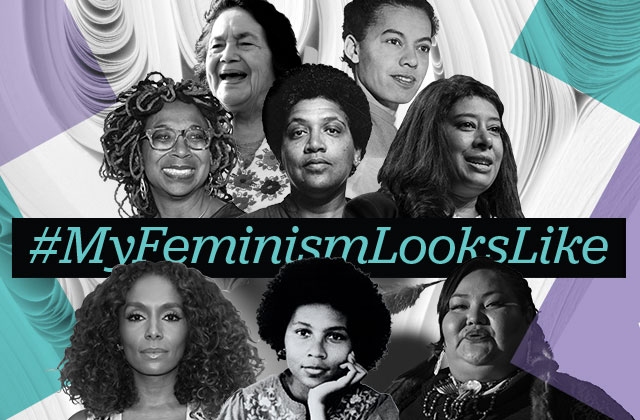This Women’s History Month celebrates more than 100 years of feminists of color fighting for gender equity, even as White-led feminism attempted to prevent them from mass organizing and using their political voices. This exclusion forced people of color, people living below the poverty line and folks in the LGBTQ+ community to craft their own spaces and coalitions and create their own version of feminism that shapes the way we win human rights to this day.
We’ve seen Black women create public demonstrations around gender inclusion such as the Million Women’s March in 1997, and give public speeches about women’s rights as far back as 1851 with Sojourner Truth’s “Aint I a Woman?”
We’ve seen youth climate activists of color like Autumn Peltier and Mari Copeny use their voices to speak on national platforms about environmental justice.
We’ve seen the grassroots operations of Asian, Latinx and Muslim people who have fought to build solidarity with others as a means of protection against state and gender-based violence.
We’ve seen many feminists of color, such as Carmelita Torres, lead large groups of people to push back against injustice and take a stand to fight for us all.
It was Black queer women who created the Combahee River Collective that urged people to consider intersecting oppressors in their feminist analysis.
It was Trans women like Marsha P. Johnson and Sylvia Rivera who reorganized the strategy of the feminist movement to fight for the rights of queer, transgender and gender nonconforming folks.
It was poor women of color who organized in labor movements, showing us the importance of looking at class solidarity and its connection to race and gender struggles in the feminist movement.
To this day, Indigenous people and Pacific Islanders continue to fight for land sovereignty and the decolonization of Turtle Island (currently known as the United States), which has contributed largely to the analysis and understanding of structural violence against people of color.
Feminists of color deserve to be celebrated and acknowledged for the organizing work and collective power that they have cultivated throughout history. Without them, we wouldn’t be able to move the feminist movement toward a more complete and perfect vision. Colorlines has launched #MyFeminismLooksLike, a digital series that explores the complexity of intersectionality, challenges the historical narrative of feminism, celebrates feminists and people of color who have shaped the women’s rights movement and provides activists of color a platform to reflect on the past, present and future of the feminist movement.
Throughout the series, we ask feminists to share their ideas on how feminism has evolved and where the movement is headed. Now it’s your turn. Add your voice by sharing your feminist vision via Facebook, Twitter or Instagram using the hashtag #MyFeminismLooksLike. Be sure to tag Colorlines so we can amplify your thoughts to our community and beyond.
.@MaritzaCPerez, Director of National Affairs of @DrugPolicyOrg, talks policy reform, intersectionality, and future of the women’s rights movement in Colorlines new digital series, #MyFeminismLooksLike. #InternationalWomenDay2020 #IWD2020 pic.twitter.com/E1kVtlY6O1
rn— Colorlines (@Colorlines) March 7, 2020
rn
rnrnrnrnrnrnrnA post shared by Colorlines News & Media (@colorlinesnews) on Mar 12, 2020 at 5:06pm PDT
rn
.@jamilahking talks feminism, what care looks like in the time of coronavirus, and the lasting impact of the AIDS epidemic in Black communities. #MyFeminismLooksLike pic.twitter.com/5kRrb64UZB
rn— Colorlines (@Colorlines) March 30, 2020
rn
